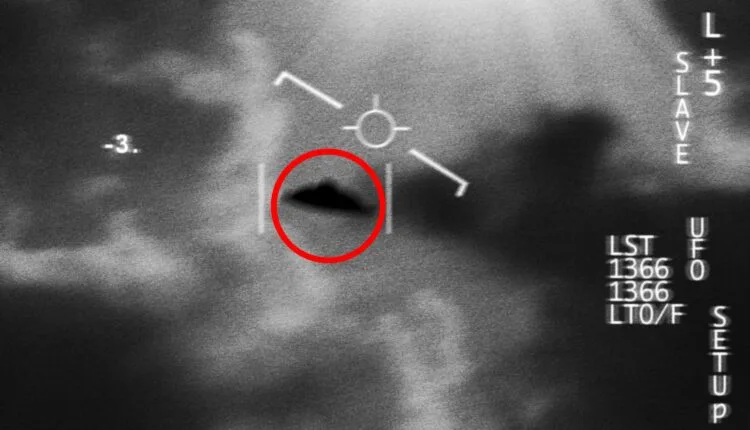
President Joe Biden works in isolation on the Truman Balcony of the White House after testing positive for COVID the first time. (Adam Schultz/The White House via AP)
A UNC Health doctor explains how the antiviral Paxlovid could produce so-called rebounds. But the drug is still worth taking for many people.
When President Joe Biden announced last month that he had COVID, he said he was experiencing mild symptoms and taking Paxlovid, the antiviral medication that’s worked wonders in keeping people out of the hospital. Soon he felt better, and after the standard five-day regiment of the drug, tested negative. But last week, he announced that he had tested positive for COVID again.
He was the latest but most prominent case of what’s known as a Paxlovid rebound case.
So what is going on? What is a Paxlovid rebound case? How common are they? Do they mean that the drug we’ve heard so much about doesn’t actually work? (Spoiler, it totally works).
We turned to Dr. David Wohl, an infectious disease expert at UNC Health who has helped lead the institution’s COVID response.
“One thing to really, really emphasize,” Wohl told Cardinal & Pine, “is that the benefits of Paxlovid completely outweigh any risk of rebound. Even if you knew you were going to get rebound, it makes sense to take Paxlovid because it does blunt the badness that happens from COVID-19.”
Here is the rest of our conversation with Dr. Wohl about Paxlovid rebounds, lightly edited for length and clarity.
First, how does Paxlovid fight the virus?
Dr. Wohl: We are all about starting drugs like Paxlovid as soon as possible after someone starts showing symptoms, because we don’t want the virus to get a toehold, especially in the lungs, and make people really sick. So we jump on the virus early. Paxlovid is basically birth control for the virus. It jams up one of the enzymes the virus needs to replicate, and it can’t make copies of itself. If it can’t copy itself, it peters out because the immune system takes over and gobbles it up.
What Happens in a Rebound Case?
Paxlovid drops the level of virus so low that the immune system stops seeing it. And if the immune system stops seeing the virus, it doesn’t make as vigorous a response, including producing those antibodies we all know we need to protect us early on.
Maybe by hiding the virus, we don’t have the immune response, and when we stop the drug after 5 days [the standard timeframe] if there are any residual virus embers that can start the fire again the antibodies have to start all over.
Another theory, and there’s some evidence of this in some studies, the level of the drug is just not high enough in the standard dosage, and while there’s a decrease in the virus, it’s not sufficient. And maybe there needs to be higher levels getting into the tissue to get the effect we want.
How Common Are Rebounds?
Even the most pessimistic estimates are that 1 out of 10 people have a rebound. So 90% of us won’t even get this.
And for most of us it’s a nuisance. We have to isolate again or may have some symptoms again.
Who Is Most at Risk?
Everybody’s different, which is why some people get rebounds and some don’t.
Someone like President Biden who’s older and has an immune system that’s basically 80 years old, it wouldn’t be too surprising that if there is any residual virus, his immune system would have to kick into gear quickly, and it wasn’t able to do so once the Paxlovid stopped.
Being immunocompromised and older does put you at higher risk for a rebound but that does not mean the majority or rebounds are in those groups. I will tell you we’ve seen people of all different types that have had rebound.
Are Symptoms More Severe?
There’s not great data on this, but most people’s symptoms come back and are mild, either similar to or more mild than the initial symptoms. In a few cases people told me the symptoms came back with a vengeance, but I predict that the majority of people have mostly mild symptoms just like the president, just like Tony Fauci, and many of the patients I take care of. But, and this has been reported by the CDC as well, there have not to my knowledge been any hospitalization or deaths during rebounds for COVID 19.
Would You Prescribe Paxlovid Again for a Person Who’s Rebounding?
Older people did very, very poorly during this pandemic, and I have a healthy respect for COVID in people 80 years old and older, so I was a little more aggressive in treating rebounds in the beginning.
But, again, more and more we are seeing information that people don’t die in rebounds and don’t get really sick, so you don’t need to re-treat. I have stopped re-treating people with Paxlovid unless they are very old or severely immunocompromised. Those groups still make me worried.
Do Rebounds Mean Paxlovid Doesn’t Work?
Paxlovid was designed to keep you out of the hospital, off of oxygen, off of life support. That’s what it was studied to do, and what it’s been found to do. It has not been found to reduce your symptoms, get you back to work quicker, get you to back to school quicker.
This is a very important point: Paxlovid is really important for people who need it – those who are at a higher risk of being hospitalized. But it does not make your symptoms better, so not everyone should get it.
If you don’t qualify or just marginally qualify, I would be hesitant to take Paxlovid, because you are already less likely to be hospitalized. You’d not really get a benefit and would risk maybe a 1 out of 10 chance of rebound and now you’re stuck in the house for an extra 5-10 days. I am 59 years old, I’m a healthy guy, I don’t qualify. I shouldn’t take it and I wouldn’t take it.
But if I was older or immunocompromised, I would definitely take it. You are in a better place for having Paxlovid even with rebound then not having it at all.
Politics

Op-ed: Michele Morrow poses a huge threat to NC public schools
Students with disabilities would particularly suffer if Michele Morrow were to become the state Superintendent of Public Instruction, Susan Book...

Biden makes 4 million more workers eligible for overtime pay
The Biden administration announced a new rule Tuesday to expand overtime pay for around 4 million lower-paid salaried employees nationwide. The...
Local News

VIDEO: Senate Republicans Block Bill to Extend Child Tax Credit
View this post on Instagram A post shared by Cardinal & Pine (@cardinalandpine) Monday was tax day, and Senate Republicans are...

The 5 most believable UFO sightings ever reported in North Carolina
Read about five alien encounters that may forever remain unexplained. When you think of the most common places where you might hear a UFO sighting...





